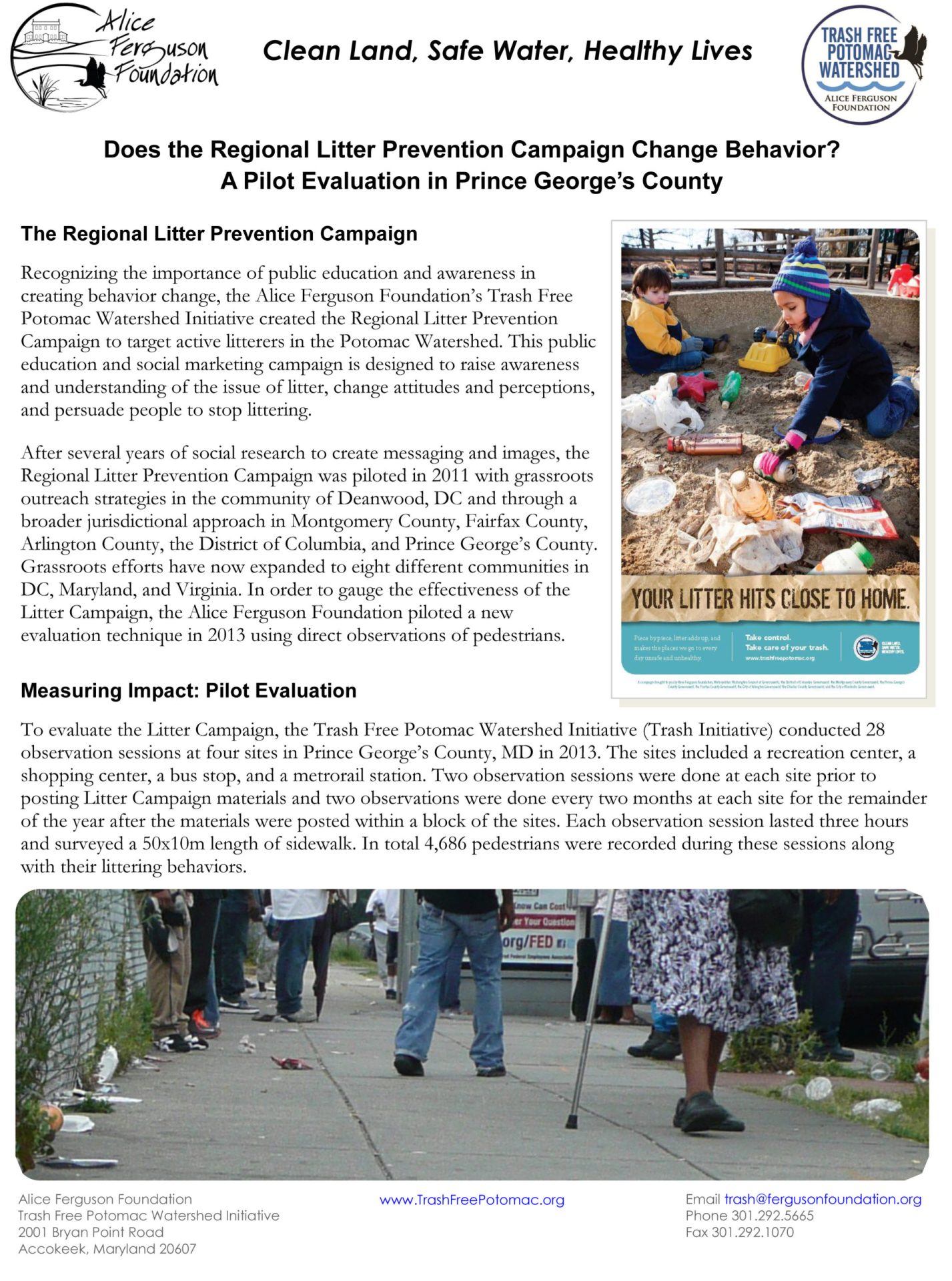By Clara Elias, Program Manager, Trash Free Potomac Watershed Initiative
Litter is in our communities, parks, and waterways in large part because someone chooses to drop their trash on the ground instead of finding a trash can. Yes, some litter is there because people accidentally drop things, or because people forget to make sure the lids of their trash and recycling bins are covered, but by-in-large litter is a problem because of personal choices in how we dispose of trash. So it is not surprising that when people sit down to think about solutions for cleaning up our communities and waterways the discussion ultimately ends up talking about public education. But how effective is public education and how do we measure its impact?
Last year the Trash Initiative set out to answer this question by piloting a new method of measuring behavior change, by measuring the effectiveness of our Regional Litter Prevention Campaign. We launched the Litter Campaign in 2011 after several years of research and development, which included an in-depth study to understand how people feel about litter and what motivates them to do it (read the study here). It has been used both by governments and by communities to educate and inspire people to change behavior and its reach is ever growing. In the last year we had many community groups, businesses, governments, and citizens join our efforts to spread our message.
 We are pretty confident that the Litter Campaign works, but we wanted more proof beyond anecdotal evidence, so we decided to directly observe pedestrians at four sites in Prince George’s County over the course of a year. During our study, we made notes on the behavior of nearly 5,000 pedestrians while we watched discretely from a parked car. The information we gathered showed a 45% reduction in the number of people littering in places where the Litter Campaign was used. What’s even more interesting is that 75% more people were putting their trash in trash cans! While these preliminary results need to be flushed out more fully, it certainly suggests a positive change in those communities away from littering and towards responsible waste disposal.
We are pretty confident that the Litter Campaign works, but we wanted more proof beyond anecdotal evidence, so we decided to directly observe pedestrians at four sites in Prince George’s County over the course of a year. During our study, we made notes on the behavior of nearly 5,000 pedestrians while we watched discretely from a parked car. The information we gathered showed a 45% reduction in the number of people littering in places where the Litter Campaign was used. What’s even more interesting is that 75% more people were putting their trash in trash cans! While these preliminary results need to be flushed out more fully, it certainly suggests a positive change in those communities away from littering and towards responsible waste disposal.
We will continue to collect information about the Litter Campaign to see if the trends hold true in other places and from year to year. You can read more about our study here [link to my summary] and if you are interested in using our Litter Campaign Materials, they are free to use and available online at TrashFreePotomac.org. While we will continue to spread the Litter Campaign throughout the region, we could also use your help. Please consider using our tools in your community and leave a note in the comments below about what kinds of outreach tools would be most useful for you.

